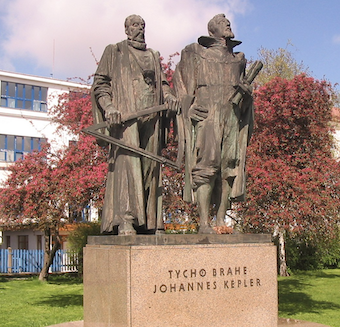From Observation to Revolution: The Collaboration that Changed Astronomy
- Feb 4, 2023
- 1 min read
Updated: Jul 21, 2023
#31 Science in History
04 February 1600
On this day, in 1600, the German astronomer and mathematician Johannes Kepler arrived in Prague to begin his collaboration with Tycho Brahe.

Johannes Kepler and Tycho Brahe were two of the most important astronomers of the 16th and 17th centuries. Their collaboration played a crucial role in the development of modern astronomy and helped lay the foundations for Isaac Newton's laws of motion and gravitation.
Tycho Brahe was a Danish nobleman and astronomer who made precise observations of the stars and planets using large, elaborate instruments. Despite his success, Brahe did not have a comprehensive understanding of the laws that governed the movements of celestial bodies.
Johannes Kepler was hired by Brahe as an assistant in 1600 and was tasked with analysing the data collected from Brahe's observations. Brahe died the following year but left his data, records and instruments to Kepler. Kepler was fascinated by Brahe's data and spent years working to uncover the underlying laws that governed the movements of the planets.
Kepler's work on Brahe's data led him to develop his three laws of planetary motion, which describe how planets move in elliptical orbits around the sun, with the sun at one focus of the ellipse. These laws, published in 1609 in Kepler's book "Astronomia Nova," proved to be revolutionary, providing a new understanding of the universe.
Without Brahe's detailed data, Kepler would not have been able to develop his laws of planetary motion. The collaboration between Brahe and Kepler was therefore critical in advancing the field of astronomy and paving the way for future discoveries.




Comments